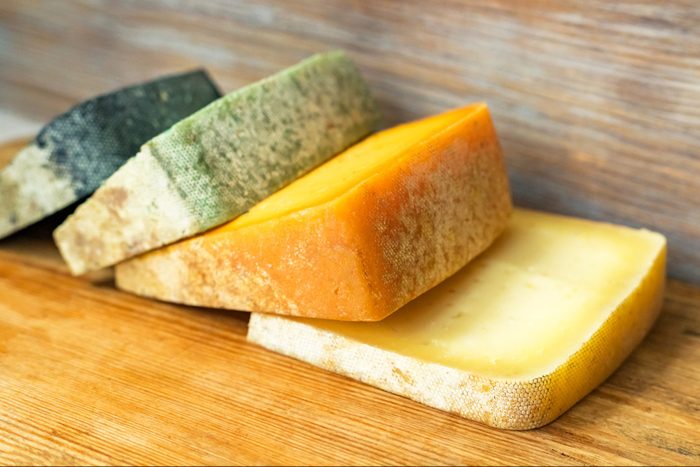
Eat: Hard Cheeses
Hard cheeses such as cheddar, Gruyere, Manchego and Asiago are still safe to eat. Use a sharp knife to cut at least 1 inch around and under the mold spot. Make sure to avoid cutting the moldy spot itself, as this will contaminate the knife. Cover the cheese in fresh wrap before refrigerating any remaining leftovers.
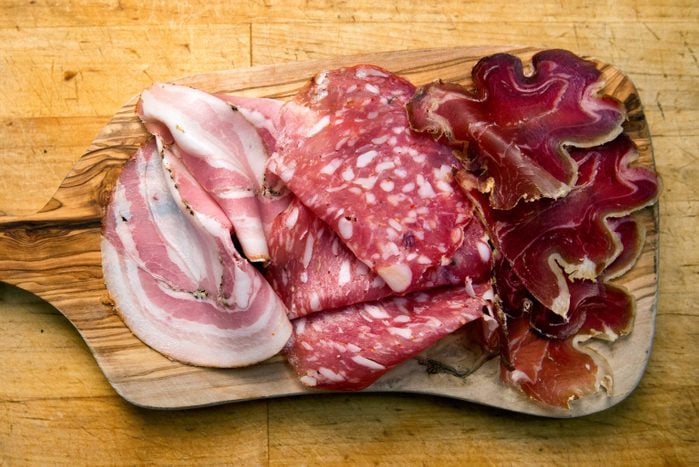
Eat: Cured Meats
Surface mold on cured meats such as hard salami and dry-cured country hams are totally normal. Just scrub the mold off the surface, and you’re good to use the meat for a charcuterie board.
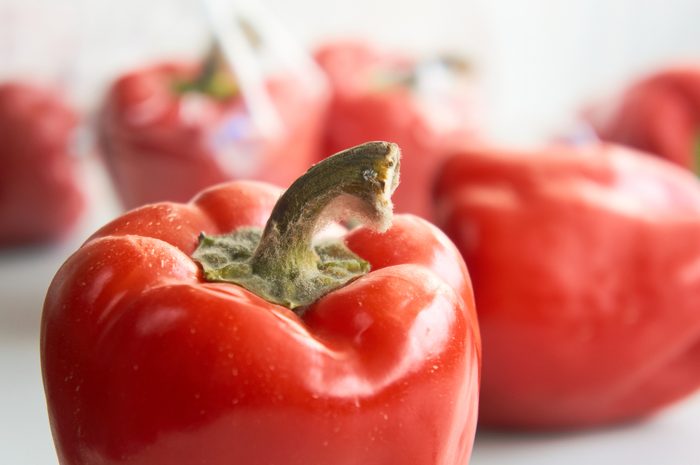
Eat: Firm Fruits and Vegetables
Firm fruits and vegetables such as carrots and bell peppers are still safe to eat. As with hard cheese, cut 1 inch around and under the mold spot.
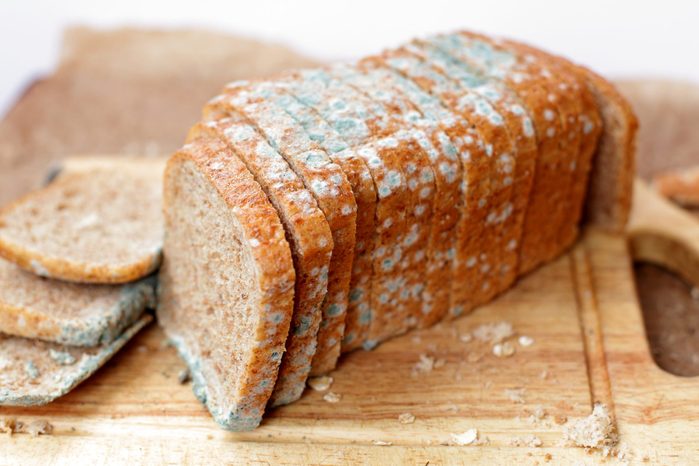
Toss: Bread and Pastries
Moldy bread or pastries should be tossed, as the mold may have penetrated beneath the bread’s surface. Freshly baked breads and breads without preservatives are particularly prone to mold. While refrigerating bread can help to keep mold at bay, it isn’t the best practice for retaining taste. We recommend using a bread box to keep bread fresh instead. Or, you can keep your loaf fresh longer by freezing the bread!
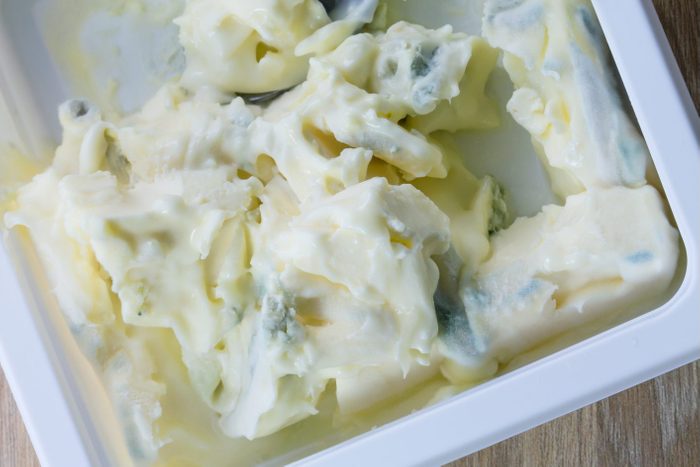
Toss: Soft Cheeses
Soft cheeses, such as Brie, Camembert, cream cheese, ricotta and cottage cheese, should be tossed when they develop mold. The same goes for moldy yogurt or sour cream. In all cases, bacteria may be growing along with the mold.
Psst… Here’s how to tell if food is spoiled.
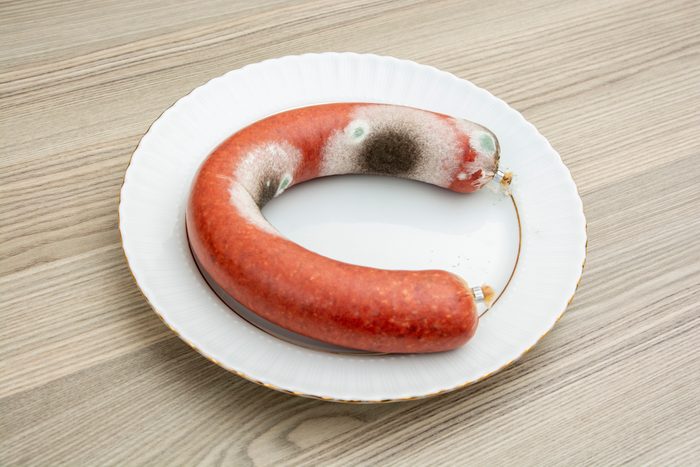
Toss: Lunch Meats
Moldy lunch meats should be tossed. Hot dogs, bacon and other leftover cooked meats that have mold should also be thrown away.
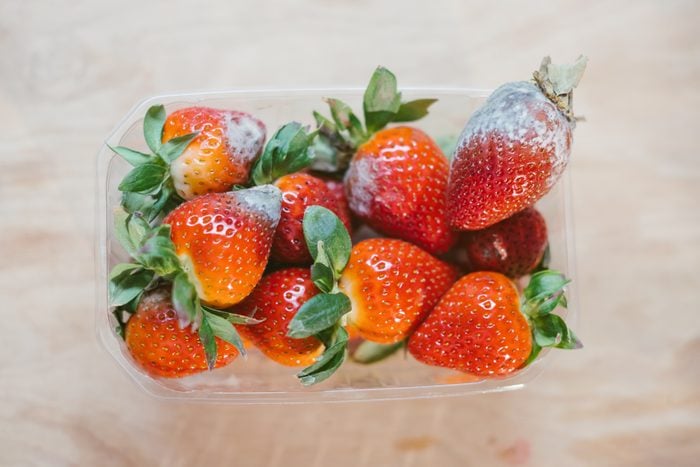
Toss: Soft Fruits and Vegetables
It’s not safe to eat soft fruits and vegetables such as strawberries, cucumbers or peaches that have mold on them. Even if you cut around the moldy spots, the mold has likely penetrated beneath the surface. Jams and jellies with mold should also be tossed.
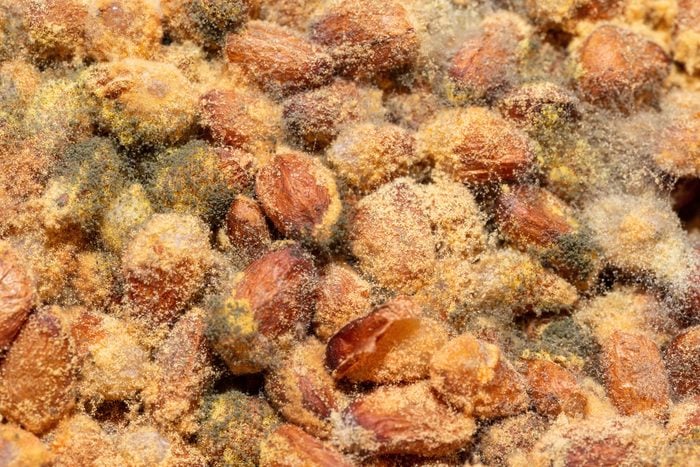
Toss: Nuts and Nut Spreads
Nuts and nut spreads with mold should be tossed. The same goes for legumes such as peanuts and peanut butter. Spreads made without preservatives are more prone to mold and should be refrigerated after opening.
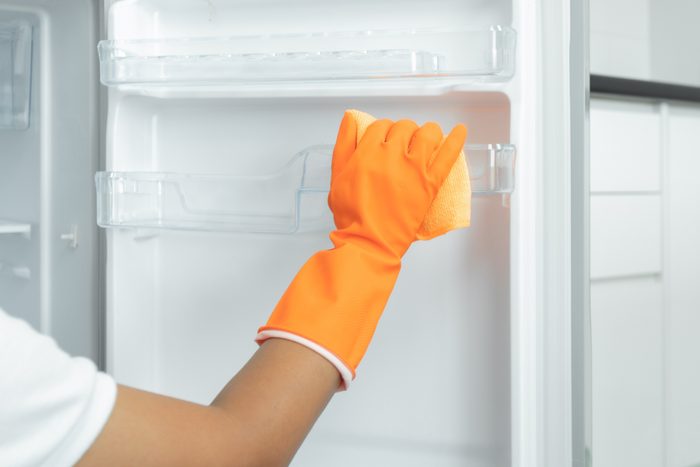
Keep It Clean
After removing the moldy food from your refrigerator or pantry, be sure to thoroughly clean the spot where it was sitting on the shelf or produce bin. Check any food that was close by to make sure it wasn’t contaminated with mold, too.
To safely discard moldy food, put it in a small bag or tightly wrap it up before throwing it in the trash. You want to prevent any mold spores from dispersing in your kitchen.
